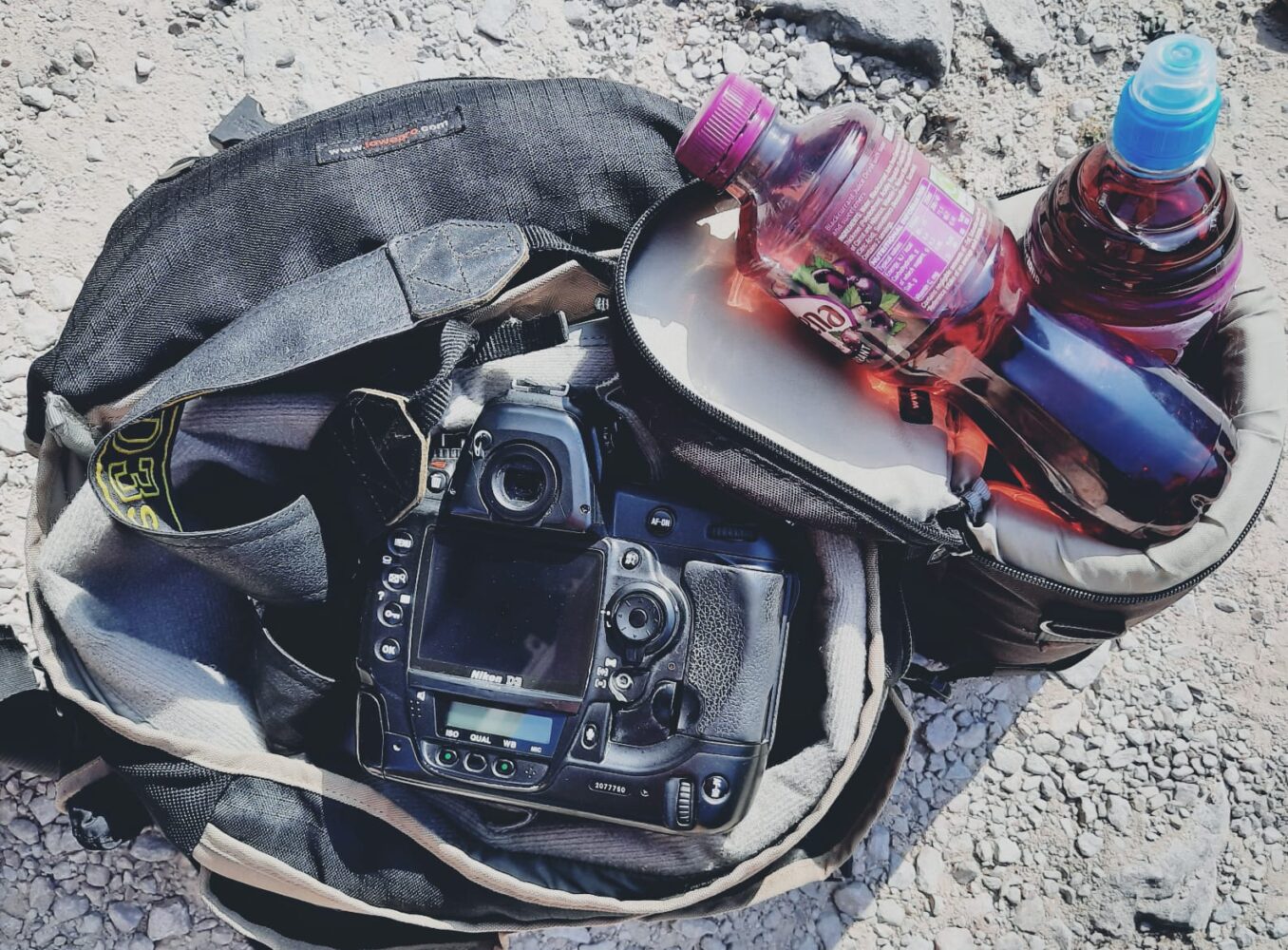Working in hot weather. ©Al Macphee/MiraclePR
Unless you’ve been holed up in a cave this week, you will know that the weekend and beginning part of next week are going to be very hot – with record-breaking temperatures a strong possibility. If you are working outdoors, and you’ve never experienced high temperatures behind the lens, here are some useful survival tips:
Shade and hydration
When working in hot weather, you’ve got to stay hydrated and in the shade as much as you can. I worked the Dartmoor Legend last weekend, and I had a cool bag in the car with loads of ice and cold drinks inside. It’s good to pace yourself. Even if I only had five minutes before the next bike came, it was well worth me standing in the shade for two or three of those minutes, keeping my body temperature down. As a bonus, I could also see my phone screen, which was logged into a new tracking system, to see when the next bike was coming in.
You’ve got your sun cream (kept cool if possible), otherwise you’re going to burn and get sunstroke, and you’re going to be peeling the next week. Besides, it’s dangerous to be exposed to the sun for too long.
On a breezy day, you can still get burnt, even without direct sunlight. I’ve got windburn before at airshows when I’ve been sitting down all day shooting take-offs. That can be very exciting and distract you from re-applying your sunscreen.
Food and drink choices
If you know you’re going to be working in hot weather, you should spend some time planning and shopping for the food and drink you’re going to consume throughout the day. I often buy a meal deal to save money, but what if your meal deal is a couple of pork pies, a triple sandwich and a milkshake. If you’re working all day, your pork pies are going to be sweating by lunch time. Pork’s a bit dodgy in the heat. You could be up all night on the toilet with food poisoning? If you’re planning on spreading your sandwiches over the day, you’re going to have to make sure they’re properly sealed once you’ve opened the packet. Otherwise, they’re going to dry up in the heat. If you’ve got a milkshake sat on your back seat or in the boot, it’s going to curdle. So, spend extra time planning how you’re going to shop for and store your food. If you grab something on the go, you could end up wasting your money.
Clothing and headwear
If you’re 90% sure it’s going to be dry, but you don’t know if it’s going to get cooler later, trousers that zip off at the thigh to convert into shorts are a great invention.
Hats are important to save the back of your neck. Make sure the hat fits and doesn’t get in the way. If you’re using flash, a cap with a peak won’t do as you will be faffing about tipping it back (and looking like Kevin the Teenager!)
Kit and kitbag
If you’ve got to walk for ten or twenty minutes to get from your car to your location (e.g., on an equestrian cross-country event), there are certain kit bag designs where you can attach SlipLock pouches. That’s better than carrying an extra holdall. I’ve got a shoulder bag, and a rucksack with SlipLock loops on the side and two pouches. One’s for a water bottle or flask, so that if it leaks it doesn’t get into any of the electronics. The other pouch is for my sandwiches.
Canon and Sony have come up with a good idea, where some of their lenses are white, which reflects the light. If you’re spending a lot of time filming in the heat, that’s a good reason to consider going with Canon. Having said that, it depends on what you’re photographing. If you are wildlife watching, for example, a white lens is going to make you stand out (or you’re going to be covering it up for camouflage anyway).
Have a burning photography question you would like Al to write about in his next blog post? Email info@miraclepr.com with your request.

